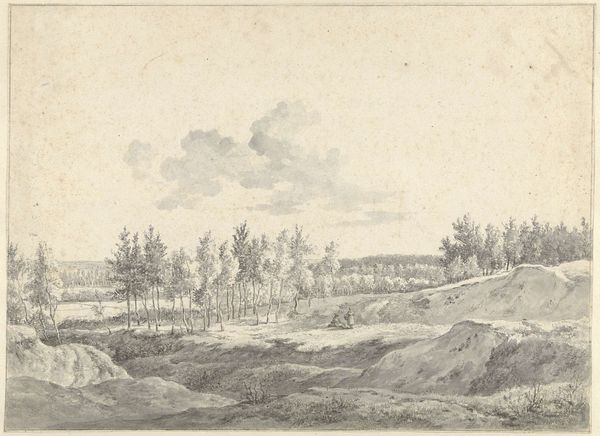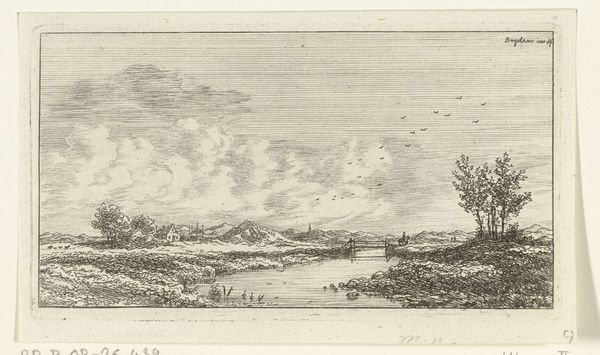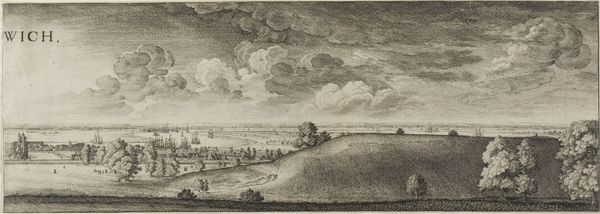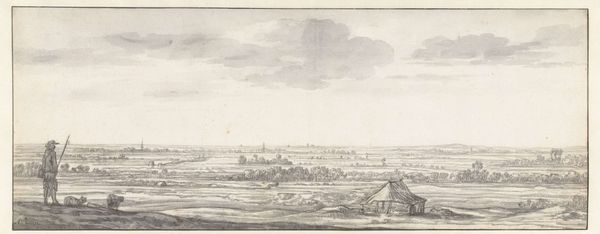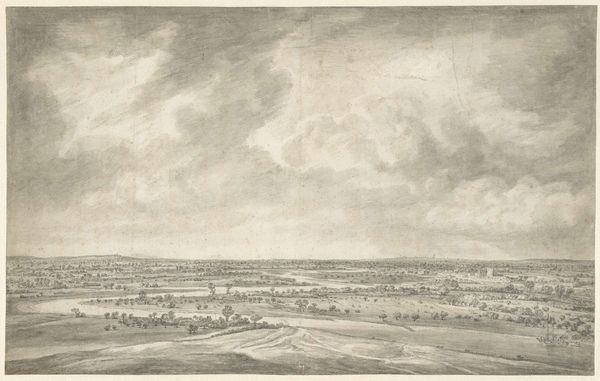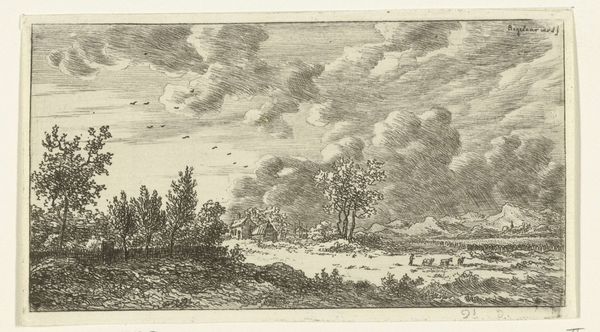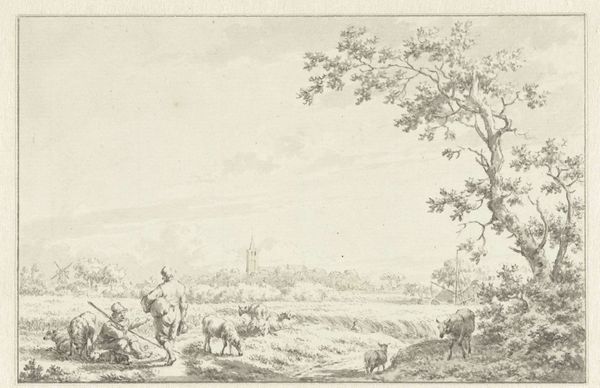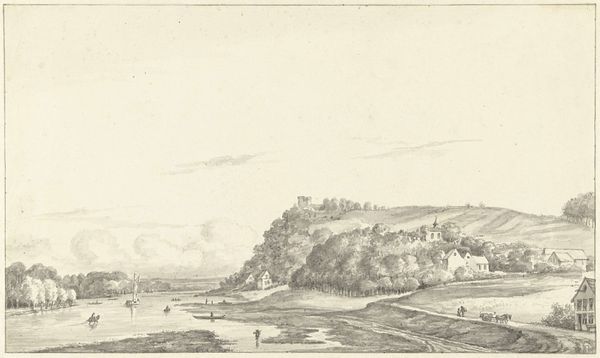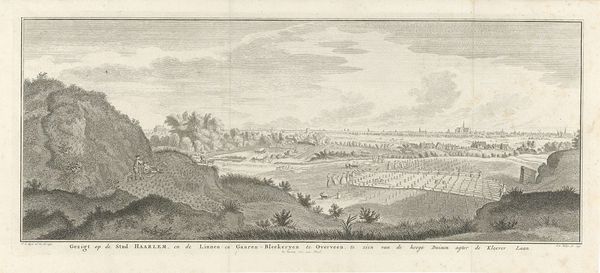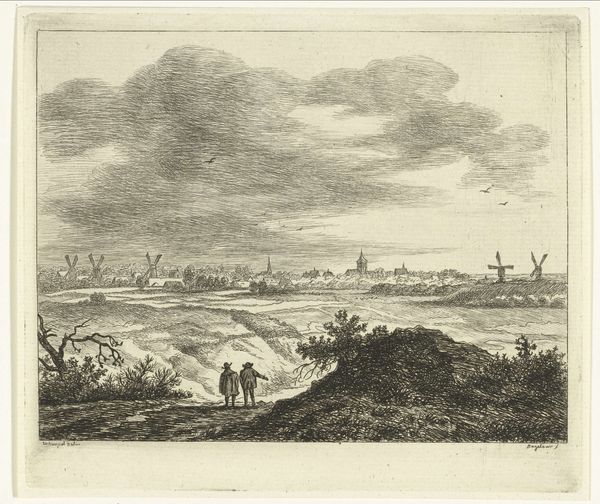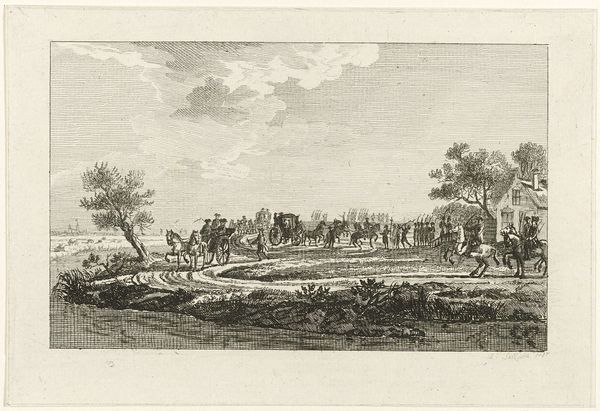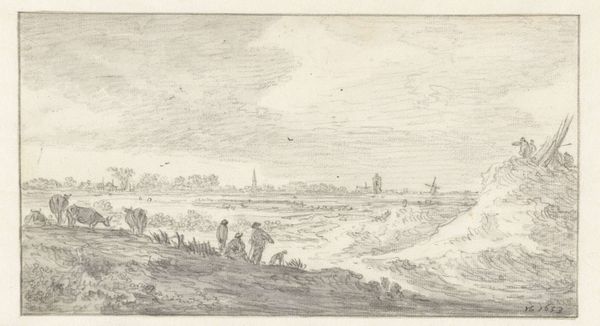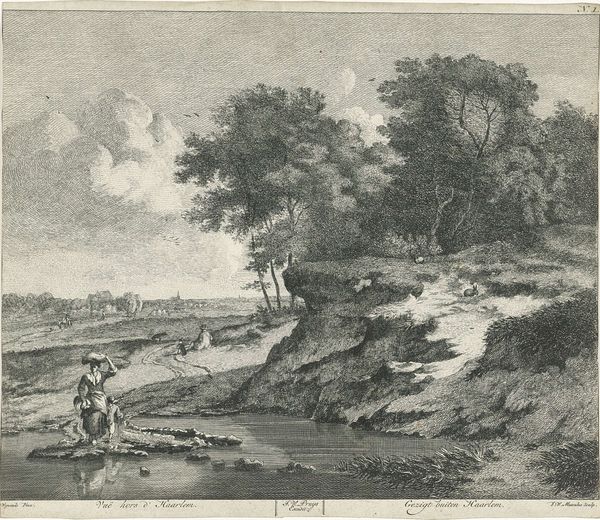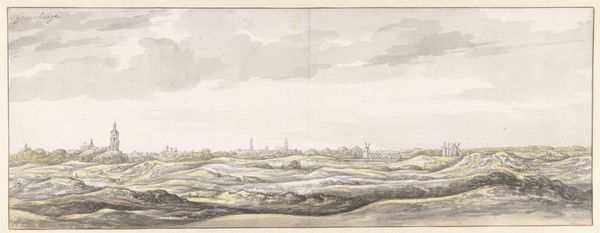
print, engraving
#
baroque
# print
#
old engraving style
#
cityscape
#
history-painting
#
engraving
Dimensions: height 106 mm, width 138 mm
Copyright: Rijks Museum: Open Domain
Editor: Here we have Bernard Picart's engraving, "Zeeslag bij Duins, 1639," made in the early 1730s. It's incredibly detailed, depicting a massive naval battle, and its small scale is quite striking. How do you interpret the symbolism within this print? Curator: It's fascinating how Picart uses this chaotic scene to represent a shift in power. The burning ship, a powerful symbol, signifies not just destruction, but also the decline of Spanish maritime dominance. Notice how the Dutch ships, while engaged in battle, seem more orderly. Does this strike you as intentional? Editor: It does. Almost as if Picart wanted to show Dutch naval superiority by showing a difference between a controlled and a chaotic force? Curator: Precisely. This controlled chaos also mirrors a burgeoning sense of national identity, the ships acting as symbols of Dutch resilience and strength. Consider the use of light and shadow – where does your eye travel first, and what does that suggest? Editor: The eye definitely goes to the smoke in the bottom right, suggesting immediate violence but that might not be the overall theme of the image, so there's tension there. Curator: Indeed. It’s a carefully constructed visual narrative designed to evoke particular feelings of national pride, defiance, and triumph. It tells a layered story of power, legacy, and the psychological impact of war on a culture. Editor: I hadn’t thought about it as a psychological portrait of a nation! That's given me a lot to consider. Curator: And hopefully provides a deeper connection to our shared visual history and memory.
Comments
No comments
Be the first to comment and join the conversation on the ultimate creative platform.
